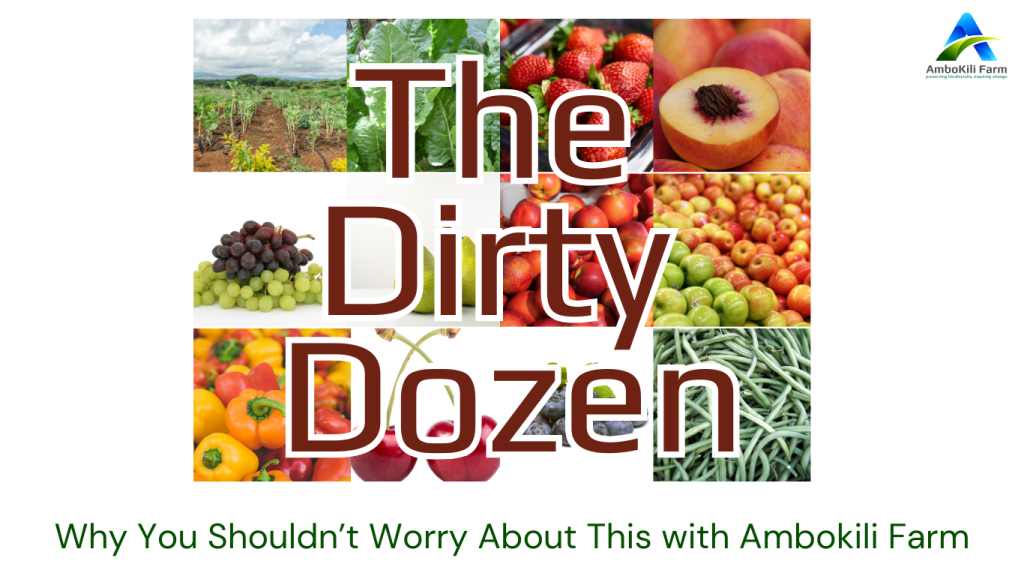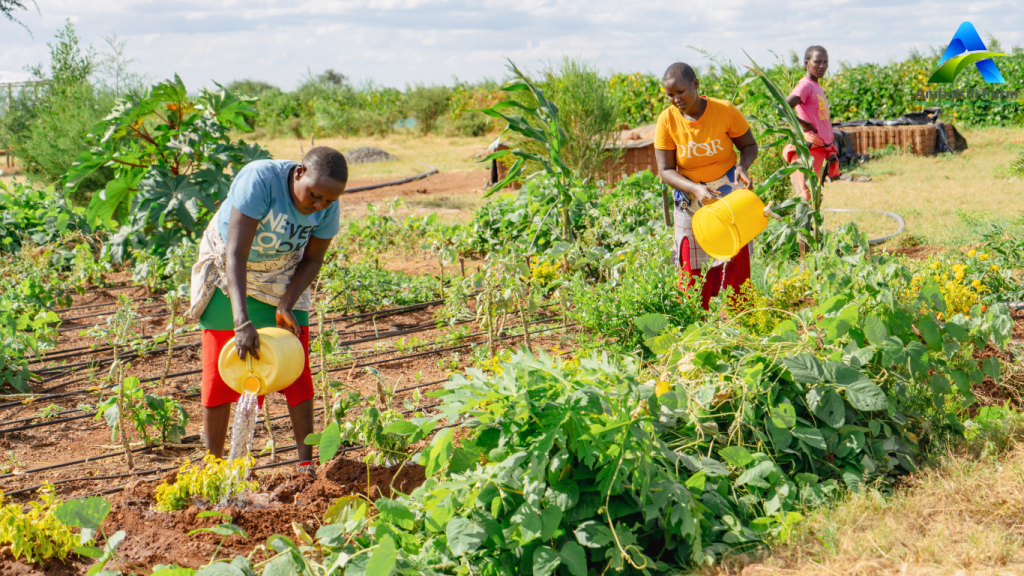The Maasai’s livelihoods together with the other local communities- Kikuyu, Kamba, Luos, Luhyas- face threats with changing environmental and socio-economic conditions.
The Maasai: Tradition and Culture
The Maasai people of East Africa live in the Great Rift Valley of southern Kenya (they are the primary residents in Kimana where Ambokili Farm operates) and northern Tanzania. The Maasai are renowned for their distinctive culture, traditionally living as nomads and pastoralists. They have long relied on cattle herding for food, clothing, and shelter; with meat, milk and blood forming the cornerstone of their diet. Their deep connection to livestock and the land shapes their way of life, social structures, and economic activities. Families seek to build up large herds to show their wealth and importance.
Historically, cattle have been used for various purposes, including making cooking utensils, drinking bowls, bedding materials, and even traditional garments known as shuka. Cattle also serve as the key currency in Maasai society, used in barter exchanges, marriage transactions, and fines for criminal behavior.
Traditionally, land in Maasai culture is viewed as a common resource shared equally among the community. However, the shift towards private land ownership and the spread of the commercial market economy have threatened this way of life. The division of land into privately owned lots has led to overgrazing and shrinking herd sizes, disrupting traditional cattle herding practices. Additionally, the establishment of national parks and wildlife reserves has restricted access to crucial grazing and water sources, further endangering the Maasai’s traditional livelihoods.
Moreover, as environmental pressures mount and resources become scarcer, there is a pressing need for sustainable practices that can support their way of life while adapting to modern challenges.
How do you change a community’s way of life when their livelihoods are deeply rooted in traditional beliefs and customs while preserving their cultural heritage?
At Ambokili Farm, we are deeply committed to not only fostering sustainable agricultural practices but also empowering our community in Kimana while preserving and respecting their culture. The Maasai, the primary community in this region, are traditionally nomads and pastoralists, deeply rooted in their rich culture and heritage. However, the shifting climate and changing socio-economic landscape necessitate new approaches to ensure food security and sustainable livelihoods. This is where Ambokili Farm steps in, introducing sustainable agriculture, promoting organic farming, teaching environmental conservation and driving community development. How do we do it?
Our Behavior Change Strategies
Behaviour change refers to a modification in individual or group actions and reactions, typically aimed at achieving specific outcomes e.g. economic, social, or environmental outcomes. It encompasses a wide range of strategies designed to influence people’s attitudes, beliefs, and practices.
Understanding and facilitating behaviour change is crucial in addressing various political, economic, social, technological and environmental issues in the context of a community.
Behaviour change theories e.g. HBM, TPB and SCT, provide a framework for understanding how and why individuals adopt new behaviours.
- The Theory of Planned Behavior (TPB): This theory suggests that an individual’s intention to perform a behaviour is influenced by their attitudes towards the behaviour, subjective norms, and perceived behavioural control (Ajzen, 1991).
- The Social Cognitive Theory (SCT): According to this theory, behaviour change is influenced by the interaction of personal factors, environmental influences, and the behaviour itself. Key concepts include observational learning, self-efficacy, and outcome expectations (Bandura, 1986). SCT considers the unique way in which individuals acquire and maintain behavior, while also considering the social environment in which individuals perform the behavior.
- The Health Belief Model (HBM): This model posits that individuals are more likely to engage in a health-related behaviour if they perceive a high level of threat from a health problem, believe that the benefits of taking action outweigh the barriers, and feel confident in their ability to perform the behaviour (Rosenstock, 1974).
Behaviour Change in Communities
From our community development programmes, we’ve discovered that implementing behaviour change strategies in communities involves addressing the collective habits, cultural norms, and social structures that influence individual behaviours. Community-based interventions are designed to engage and empower members of the community to adopt healthier, more sustainable practices.
- Community Engagement and Participation: Effective behaviour change in communities requires active engagement and participation from community members. This includes involving them in the planning, implementation, and evaluation of interventions. Participatory approaches ensure that the interventions are culturally appropriate and address the community’s specific needs and concerns (Rifkin, Lewando-Hundt, & Draper, 2000).
- Education and Awareness Campaigns: Raising awareness and educating community members about the benefits and methods of behaviour change is a fundamental strategy. These campaigns can use various media, including workshops, social media, and public service announcements, to disseminate information and motivate change (Wakefield, Loken, & Hornik, 2010).
- Social Support and Peer Influence: Social networks and peer influences play a critical role in shaping behaviour. Community-based interventions often leverage social support and peer influence by creating support groups, peer mentoring programs, and community champions who model and promote positive behaviours (Heaney & Israel, 2008).
- Policy and Environmental Changes: Changing the physical and social environment can facilitate behaviour change by making it easier for individuals to adopt new behaviours. This might include implementing policies that promote healthy behaviours, such as creating smoke-free zones or providing access to healthy foods and safe recreational spaces (Sallis, Owen, & Fisher, 2015).
Achieving behavior change, especially in communities deeply rooted in tradition, can be challenging. Obstacles include resistance to change, lack of awareness, and limited access to resources and education.
Challenges in Achieving Behaviour Change
Despite the potential benefits, achieving behaviour change in communities can be challenging. Some of the common impediments include:
- Cultural Resistance: Deeply ingrained cultural practices and beliefs can be resistant to change. Interventions need to be culturally sensitive and respectful to gain acceptance and support (Airhihenbuwa, 1995).
- Resource Constraints: Limited resources, including funding, personnel, and infrastructure, can hinder the implementation and sustainability of behaviour change programs. Effective interventions often require significant investment and ongoing support (Durlak & DuPre, 2008).
- Lack of Trust: Trust between the community and intervention providers is crucial. A lack of trust can lead to skepticism and resistance, undermining the effectiveness of the intervention. Building trust requires transparency, consistent communication, and involving community leaders (Freimuth, Cole, & Kirby, 2001).
- Lack of Awareness: Communities may not be aware of the benefits of sustainable practices or the risks of continuing traditional methods.
How Ambokili Farm is Driving Behavior Change in Kimana
Ambokili Farm is dedicated to overcoming these challenges and creating lasting behavior change in Kimana. This is mainly achieved through training and adaptation of different ways of doing things. Here’s an in-depth look at how we are empowering the community:
Educational Workshops and Training Programs
We conduct regular workshops and training sessions to educate local farmers on organic, sustainable farming practices. These trainings cover topics like organic farming, efficient water use, and soil health management. By providing hands-on training and practical demonstrations, we help farmers understand and implement these techniques effectively.
- Impact: Increased awareness and adoption of sustainable practices, leading to improved crop yields and environmental conservation.
Introducing Organic Farming
Organic farming offers numerous benefits, including healthier produce, improved soil health, and reduced environmental impact. We are introducing the Maasai and local communities to organic farming techniques, showing them how to grow vegetables and other crops without relying on synthetic inputs.
- Impact: Enhanced food security, improved nutrition, and a sustainable farming model that can be replicated.
Promoting Crop Diversification
Traditionally, the Maasai diet has been heavily meat-based. By encouraging the cultivation and consumption of vegetables, we aim to diversify their diet and improve nutrition. This not only promotes health but also reduces dependency on livestock, making the community more resilient to environmental changes.
Water Management Innovations
Water scarcity is a significant challenge in ASAL areas. We have implemented efficient water management systems such as drip irrigation and rainwater harvesting to optimise water use and ensure crops receive adequate hydration.
- Impact: Conserved water resources, increased crop productivity, and enhanced resilience to drought.
Community-Led Conservation Initiatives
Engaging the community in conservation efforts is crucial for sustainable development. We involve the Maasai in tree planting, soil conservation, and waste management projects, fostering a sense of ownership and responsibility towards the environment. E.g. we help them grow trees in their compounds and follow up on their progress to ensure they survive and thrive.
- Impact: Enhanced environmental stewardship, improved ecosystem health, and sustainable land management.
Supporting Women and Youth
One of the radical changes we’ve introduced and encourage is allowing women to work. This includes expectant mothers who would previously be let go from their positions when their employers knew they were expectant. Empowering women and youth are essential for community development. We provide targeted training and support to these groups, helping them become active participants in sustainable farming and environmental conservation.
- Impact: Increased economic opportunities, gender equality, and a more inclusive approach to community development.
At Ambokili Farm, we believe that true sustainability goes beyond farming practices. It involves empowering the community, fostering behavior change, and creating a resilient and self-sustaining environment. By introducing the local communities to organic farming, promoting sustainable practices, and driving community-led initiatives, we are paving the way for a brighter, more sustainable future in Kimana, Kajiado County, Kenya.
Join us in our journey towards sustainable development. Visit our News & Blog page to learn more about our initiatives and discover how you can be a part of this transformative journey.





